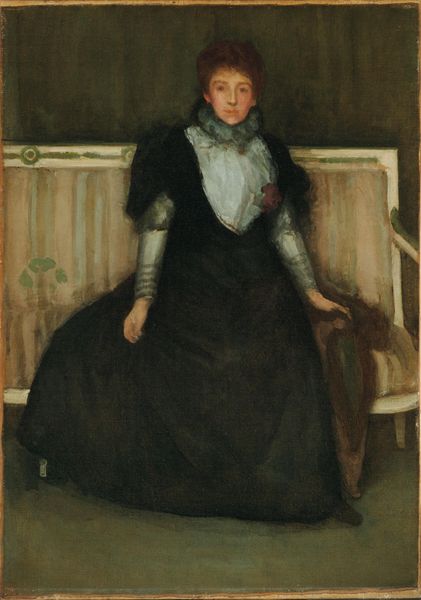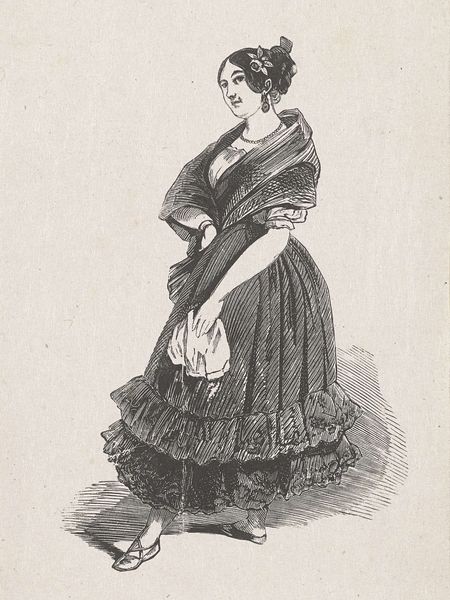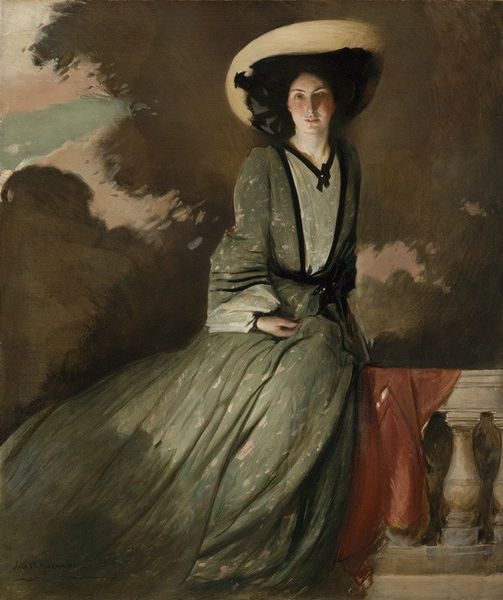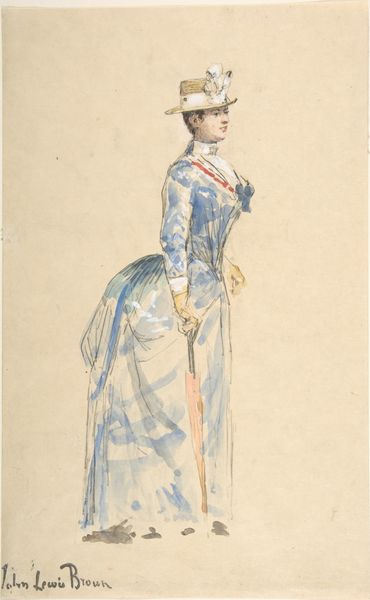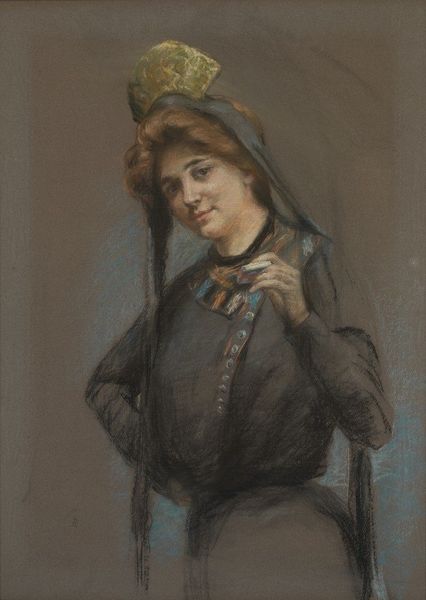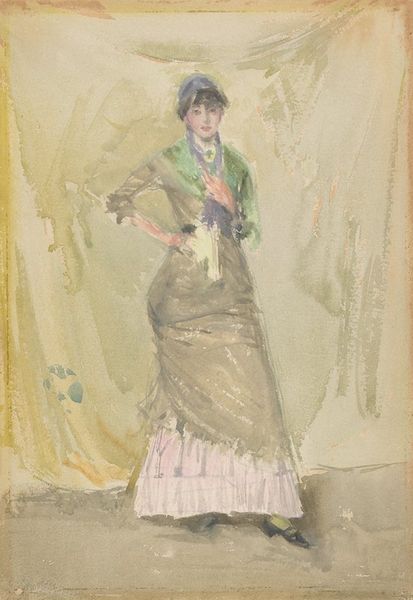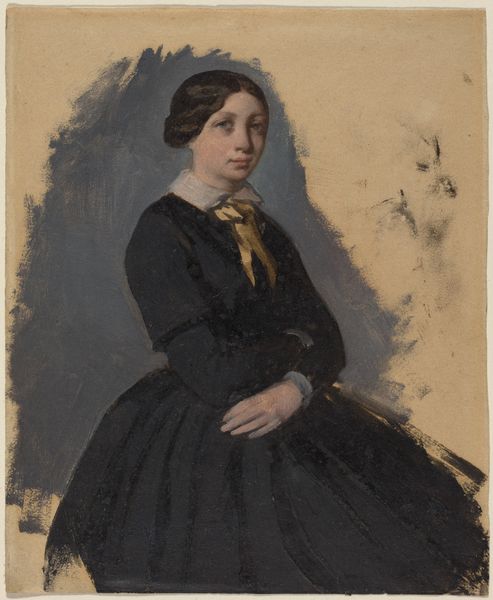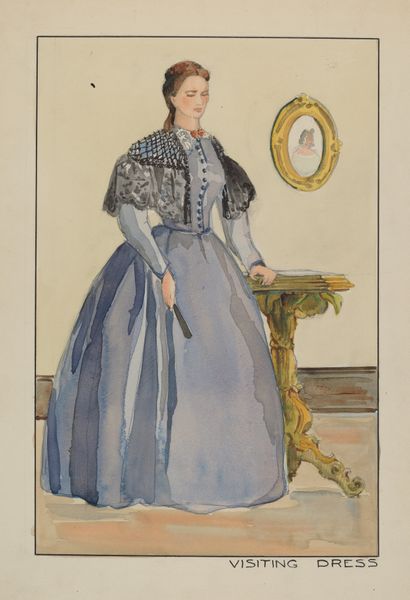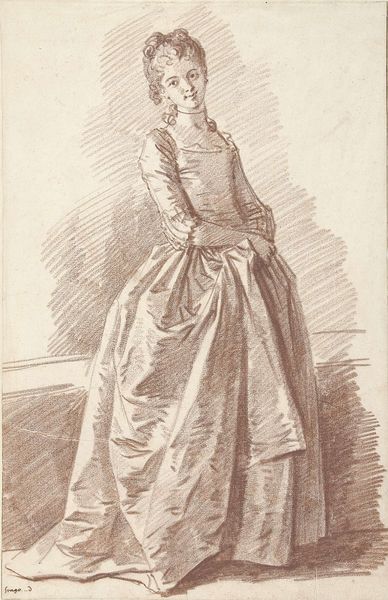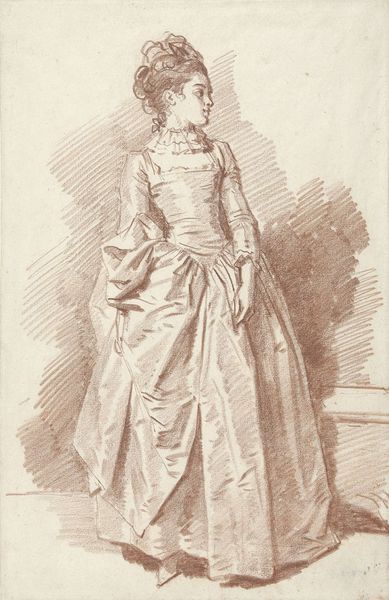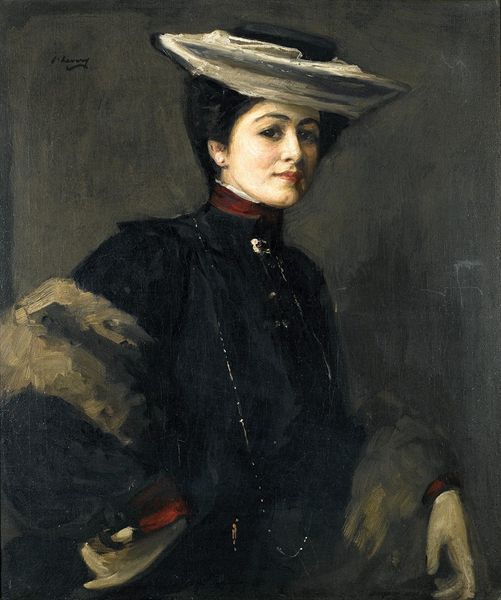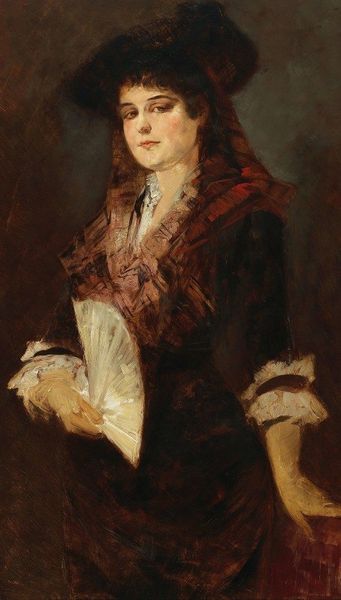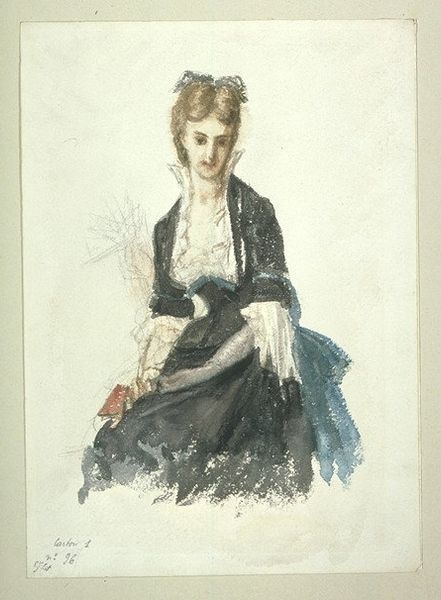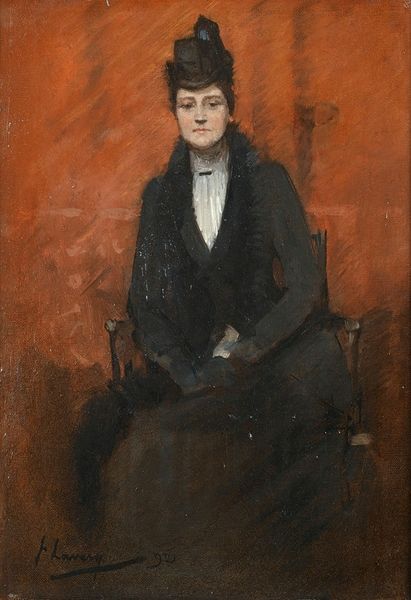
Copyright: Public Domain: Artvee
Editor: Here we have Anders Zorn's "Portrait of Miss Nyström," created around 1880. The delicate watercolor technique is just lovely. The color palette is limited, creating a somber, reserved mood, yet I am curious how the black clothing material signifies class or something else. What do you see when you look at it? Curator: Notice the contrast between the loose watercolor washes used for her dress and the more detailed rendering of her face. Think about Zorn's labor, choosing where to invest time and skill. Was he under commission? If so, understanding who the patron was would reveal production conditions behind the work's materiality. Editor: So, the amount of detail might indicate value or social status for a client? Curator: Precisely. Furthermore, consider the availability and cost of the materials themselves – pigments, paper, even the artist’s access to training – and what that tells us about the art world at the time and Zorn's placement within its hierarchical structure. It wasn’t just about artistic inspiration, it involved supplies. Editor: I never really thought about the economics of artmaking beyond just the sale price! Curator: Right! Art is intrinsically linked to both labor and consumption. Who made it, with what, and for whom? Asking those questions opens up new interpretations of the work. The consumption habits of both the Nyström family, by the patron of the work, by audiences. Editor: This perspective changes everything. It reframes "Portrait of Miss Nyström" not just as an image but a physical artifact loaded with historical and social context of the time! Curator: Exactly, and these observations of the materials also allow us to see how this seemingly simple artwork can reflect on issues related to the development of Romantic and Realist painting.
Comments
No comments
Be the first to comment and join the conversation on the ultimate creative platform.
